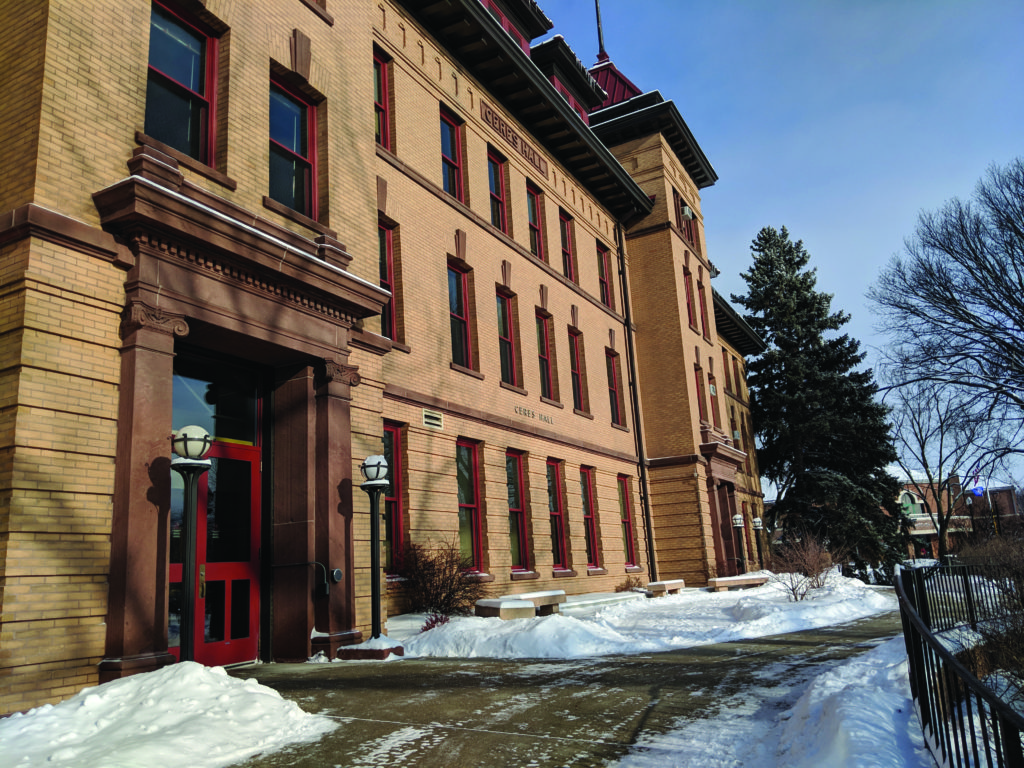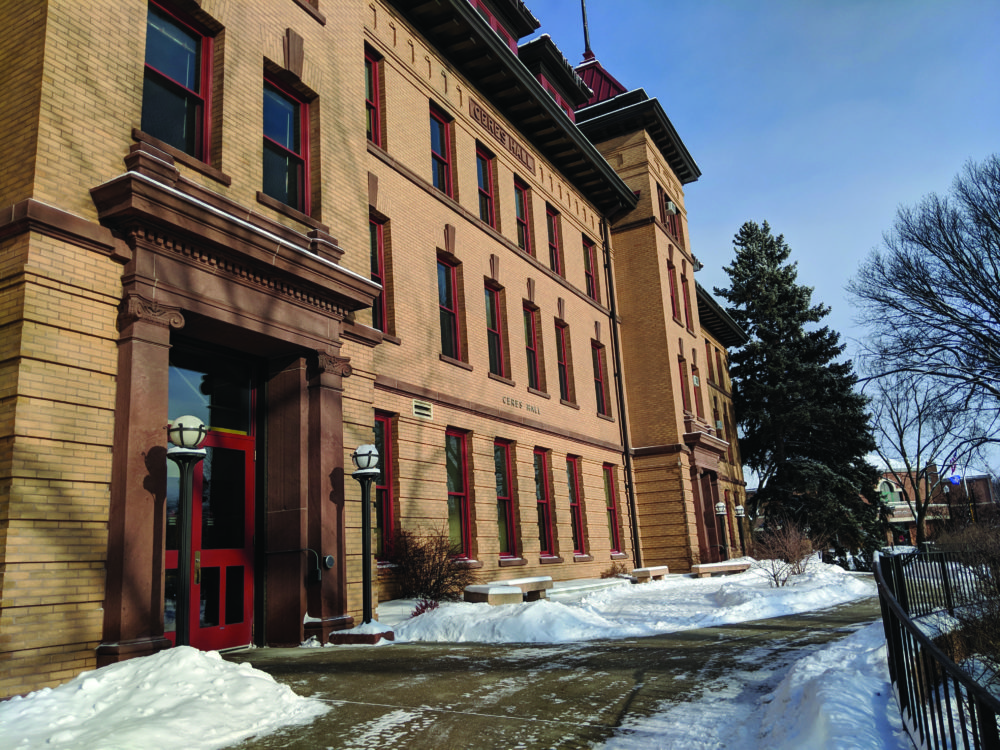NDSU administrators seek to make student mental health a priority

With more college students living with mental illness than ever, North Dakota State administrators are looking at ways the university can better support students’ mental health.
Nationally, mental health among college students is an increasingly prominent concern. College and university counseling center usage increased by 38.4 percent between 2009-10 and 2014-15. At NDSU, the numbers are staggeringly higher. Within that same five-year period, usage of the NDSU Counseling Center increased by 204 percent.
“The number of students with concerns has increased, and the intensity and seriousness of those concerns has increased over the past 20 years,” Bill Burns, director of the NDSU Counseling Center, said.
The No. 1 issue facing students today is anxiety, Burns said. This issue is consistent with data from Student Health Services, which has also seen an increase in mental health visits. Since 2016, anxiety and depression have been in the top five most common diagnoses at Student Health Services — more often than the common cold. At the beginning of the fall semester, anxiety was the second most common diagnosis at Student Health Services.
Burns speculates the rise in anxiety is because the current generation was not allowed to develop important coping skills as children. Increasingly, “secondhand stress” also occurs when students have friends contemplating suicide and don’t know how to help.
The increase in students seeking help means the Counseling Center has needed to expand its staff. According to the International Association of Counseling Services, university counseling centers should aim to have one full-time licensed mental health provider for every 1,500 students. If NDSU followed these guidelines, the Counseling Center would have nine full-time licensed providers. Currently, the Counseling Center has eight full-time licensed providers.
However, the Counseling Center has been able to fill in the gaps. Graduate students can complete their practicums or internships by providing therapy at the center. The extra hours of therapy these students provide each week are equal to the work of 10 additional full-time providers.
The Counseling Center has also been creative in finding other ways to maximize the number of students helped. Students are encouraged to join group counseling sessions when possible, and those with more complex concerns are referred to off-campus providers. Instead of weekly appointments, most students are seen on a biweekly basis.
With these measures in place, the Counseling Center is able to minimize wait times for appointments. In the 2016-17 school year, the average wait time to see a provider was 5.5 week days. Students in crisis are almost always seen on the same day they contact the center.
Burns said actual wait times are lower due to students rescheduling or not showing up to appointments. However, if students are unwilling to shift around their busy schedules, finding a time to meet can be more difficult.
“We find a way to help students even if we’re really busy,” Burns said.
As a member of the IACS Board of Accreditation, Burns has been able to get a good grasp of how the NDSU Counseling Center compares to mental health services at other colleges and universities.
“I can say having gone out and visited 20 to 30 schools that we are in the top 90 percent,” Burns said.
A holistic approach
Despite the increase in students seen, funding for the Counseling Center has remained the same for the past five years. While this relationship may seem incongruous, Burns said he is simply thankful that funding has not decreased.
“The idea is, how can we create more compassion and awareness?”
Elizabeth Skoy, associate professor of practice at NDSU
“Given the state’s budget crisis and the budget cuts many university departments have had to make, this can be seen as a net-positive for the center,” Burns said.
From the perspective of the entire university, NDSU’s administration has started to look at how to address mental health as just one dimension of student health and wellness. At the beginning of the 2018-2019 school year, the President’s Council on Alcohol and Other Drugs quietly rebranded itself as the President’s Council for Campus Well-Being. The PCCW strategic plan indicates that the council has changed its direction “by taking a holistic approach to increasing and sustaining all aspects of student well-being.”
Leaders from multiple departments across campus form the PCCW’s executive committee, including Burns, the associate director of Residence Life, the director of Student Health Service and the study body vice president. Laura Oster-Aaland, associate vice provost for enrollment management and student affairs, co-chairs the council with Matt Larsen, director of athletics at NDSU.
The PCCW’s five focus areas are safety, physical health, mental health, substance use and social health. Several goals for improvement are outlined, including several related to mental health. Fitting with the American College Health Association’s Healthy Campus 2020 initiative, the PCCW goals include reducing “the proportion of students who report academic performance adversely affected by stress, anxiety and sleep difficulties.” The target is 24.7 percent for stress, 16.3 percent for anxiety and 18 percent for sleep difficulties.
The strategic plan is not simply about meeting numbers, however. It also emphasizes the importance of changing the culture of NDSU so that the university is “a campus community where members are mentally and emotionally healthy, resilient, self-aware and supported.”
Snapping the Stigma
Culture change is also at the root of a mental illness de-stigmatization project led by two NDSU pharmacy professors, Elizabeth Skoy and Amy Werremeyer. Snap the Stigma focuses on humanizing individuals’ experiences with mental illness through photographic reflections.
“The idea is, how can we create more compassion and awareness?” Skoy said.
On SnaptheStigma.com, students can upload a photo that represents their everyday struggles and triumphs of living with a mental illness and write a brief description to explain their photo. All submissions are anonymous, so there is a raw and vulnerable strength evident in the words of those who share their stories.
The project is impactful in two ways: it provides a space for students with mental illness to process and realize they are not alone, and it allows others to better understand and empathize with them.
To read others’ stories or share your own, visit SnaptheStigma.com. The website has a portal where anyone can anonymously upload photos of their own experiences with mental illness. Snap the Stigma also posts regularly on Facebook and Instagram.
Get help
The NDSU Counseling Center offers individual and group counseling free of charge to NDSU students. The center is located in 212 Ceres Hall and is open 8 a.m. to 5 p.m. Monday through Friday. Call 701-231-7671 to make an appointment. If you are in a crisis situation, you can still call after hours to talk with someone. In an emergency, call 911.
Wondering if you should see someone at the Counseling Center? NDSU has a confidential Stress and Depression Assessment that you can take online. A full list of Counseling Center groups, classes and workshops are also available. Visit ndsu.edu/counseling/ for more information.
Student Health Services can also provide guidance on mental illness and prescribe medications. Call 701-231-7331 to make an appointment and talk with a provider. Mental health appointments must be made over the phone. As of Jan. 1, 2019, students will be charged for office visits to Student Health Services. The clinic and pharmacy are open 8 a.m. to 5 p.m. Monday through Friday in the Wallman Wellness Center.
